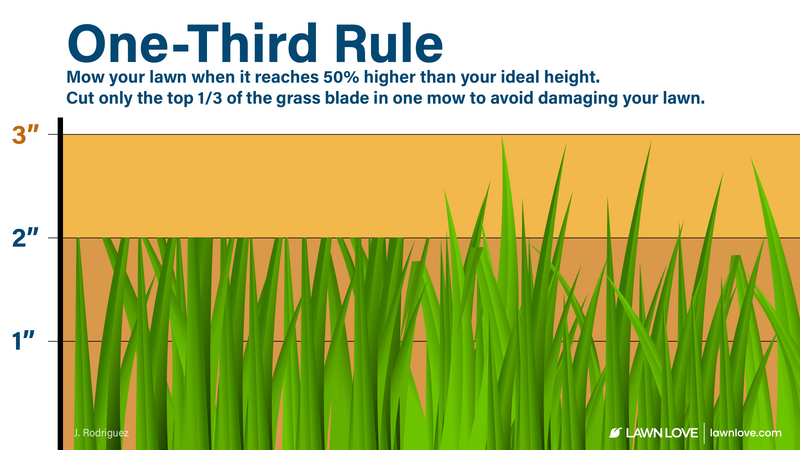
Whether you’re planning to rent your home for Masters week or throw the first barbecue of the year, you’ll need to prepare your Augusta spring lawn for company. After the lawn’s long winter dormancy, it’s now time to wake it up, encourage spring growth, and boost its curb appeal. Treat your turf to these nine spring lawn care treatments.
1. Rake the lawn
As temperatures rise and early blossoms bloom, give your lawn a deep comb with the garden rake. Raking loosens matted grass, increases air circulation, and encourages new growth.
Remember to collect lawn debris as you rake the yard, such as leaves, twigs, and branches. Pests and diseases often overwinter in plant debris, and the last thing you want is for your lawn to have an outbreak before your barbecue.
Raking also helps to minimize thatch buildup. Thatch is the accumulation of dead and living organic matter between the soil and the turf blades. A thin layer of thatch acts as mulch and benefits the lawn. But once thatch exceeds ½-inch thick, it becomes an attractive place for diseases and pests to overwinter.

2. Treat lingering pests and diseases
Is your lawn growing mold? Many turf diseases, such as dollar spot and rust, appear in springtime. If you expect your lawn is suffering from a fungal disease, treat the problem right away. Otherwise, the fungus may spread or kill your grass.
Pests can cause problems in spring, too. Moles and gophers love to dig in spring’s moist soils, and grubs will make a hearty meal out of your lawn. Once you’ve identified the troublesome pest, send them on their way with an effective control treatment.
Pro Tip: Healthy lawns are less susceptible to pests and disease than unhealthy lawns. Keep your turf well maintained and healthy with these 15 lawn care treatments to help prevent pest and disease problems.
3. Remove thatch
If raking your lawn isn’t managing thatch buildup, consider removing the thatch with a mechanical dethatcher. Your local home improvement store may offer dethatcher rentals, or you can hire a local lawn care pro for help.
Most lawns in Augusta grow warm-season grasses (cool-season grasses can’t tolerate our boiling summers). The best time of year to dethatch a warm-season yard is late spring through early summer.
Pro Tip: You may notice some of your neighbors combining their thatch removal with spring aeration, but it’s wise to wait until summer to aerate the lawn. Aeration is an invasive lawn treatment, and your grass will heal best from the treatment during its active growing season, which is summer.
4. Test your soil
You might be eager to green up your spring lawn, but it’s important to test your soil before you go spreading fertilizer. If you don’t test your soil’s fertility levels, you risk overfertilizing the lawn, which can harm your grass and the environment.
A soil test can reveal a lot about your soil, such as:
- Nutrient deficiencies
- Salt levels
- pH imbalances
- Organic matter percentage
- Fertility levels
At-home soil tests are available, but they won’t reveal as much about your soil as a laboratory test will. A laboratory test offers detailed results about your soil and how to best make improvements with fertilizers and amendments. Consider sending a soil sample to The University of Georgia Cooperative Extension, which offers soil testing to Richmond County.
5. Fertilize
Refer to your soil test for the best fertilizer regime for your turf. You may find your soil is low in a specific nutrient, or you may discover your lawn doesn’t need any fertilizer at all.
Mid-spring through summer is the best time to fertilize your warm-season turf. But be careful –– you must wait to fertilize your lawn until after its spring green-up. Otherwise, the grass will grow too quickly and sacrifice its root development for leaf growth.
6. Turn on the irrigation system
Turning off the irrigation system in the fall helps prevent pipes from freezing in winter. When the threat of a hard frost has passed, it’s time to turn the irrigation system back on and give your lawn a drink.
How you water your lawn has a significant impact on your lawn’s health. Here are some helpful watering tips to keep in mind:
- Most established lawns need 1 to 1 ½ inches of water per week. This amount will vary depending on many factors, including your lawn’s grass type, recent rain levels, and climate.
- Promote a deep and healthy root system by watering less often and for long periods. Watering too often and for short periods encourages a shallow and weak root system.
- The best time of day to water your lawn is before 10 a.m. (preferably before 8 a.m.). If you water after 10 a.m., the sun will evaporate the water before your lawn has a chance to absorb the moisture.
- Avoid watering in the evenings. Why? Because your lawn will struggle to dry at night. It will remain moist for long hours, which may attract pests and disease.
7. Run the lawn mower
As spring approaches, you’ll notice your lawn beginning to grow again. Once it reaches its usual cutting height, it’s time for the first mow of the year.
A well-manicured lawn can make quite the impression on the neighbors (or the guests renting your home for Masters week). Remember not to cut your grass too short; otherwise, you may scalp your lawn. And don’t let the grass grow too tall either unless you want pests and diseases renting out your yard instead.
| Warm-season grasses | Recommended mowing height (inches) |
| Common Bermudagrass | 1.5-2.5 |
| Hybrid Bermudagrass | 0.5-1.5 |
| Zoysiagrass | 1-2 |
| Bahiagrass | 3-4 |
| Centipedegrass | 1-2 |
| Buffalograss | 2-3 |
| St. Augustinegrass | 2.5-3 |
Remember to follow the rule of one-third as you mow. It means never cutting more than one-third of the grass blade’s length during a single mow. For example, if you want to cut your Zoysiagrass down to 2 inches, mow the lawn before it reaches 3 inches tall.

8. Overseed
The secret to maintaining a dense, thick lawn is to prevent patches and thinness before they occur. That’s why routine overseeding is an essential task each spring or early summer.
Pro Tip: Grass seed will have the greatest success if it has good contact with the soil. You can increase the soil’s exposure by performing thatch removal and aeration before overseeding.
9. Apply pre-emergent herbicide
If summer weeds are a common nuisance in your yard, spring is the season to apply a pre-emergent weed blocker.
Keep in mind that weeds are often a sign of another lawn ailment. A healthy lawn is less likely to succumb to weeds than an unhealthy lawn.
Caution: Always follow the product’s instructions before applying the herbicide.
Find expert lawn care near you
From mowing the grass to removing thatch, spring lawn care can take hours. Whether you haven’t got the time or the dethatcher looks too complicated to start, call a local lawn care professional for help. They’ll give your lawn expert care while you relax and savor your favorite cake from The Boll Weevil Café and Sweetery.
Main Photo Credit: Robin Mathlener | Unsplash